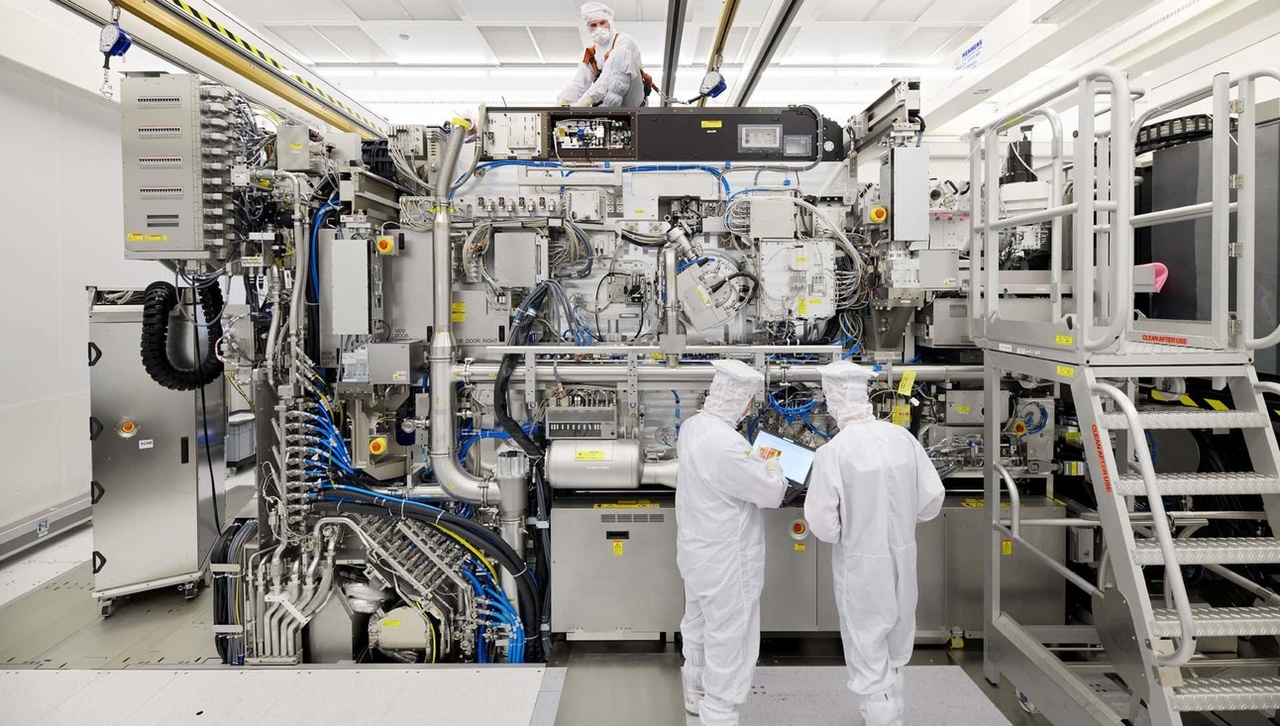ASML NV: The best technology company in Europe- The brains behind every smart chip
Introduction
ASML Holding N.V., a Dutch company based in Veldhoven, is the world's leading supplier of lithography systems for the semiconductor industry.
Historical development
The history of $ASML (-1,76 %) is characterized by impressive growth and equally remarkable resilience. The only $PHIA (-0,7 %) spin-off, after a steep upward trend, suffered a severe setback with the bursting of the dotcom bubble in 2001, but recovered in 2002. A strategically important step was the acquisition of BRION in 2007, which allowed ASML to significantly optimize its chip manufacturing process and essentially grow into what it is today.
Business model and core competencies
ASML's business model rests on three main pillars:
1. sale of machines
2. service and maintenance contracts
3. software solutions and upgrades for existing systems
The company's expertise centers on the development and manufacture of highly complex lithography systems, in particular extreme ultraviolet lithography (EUV), which is considered the technological heart of modern semiconductor production.
Market position and competition
ASML holds a dominant market position and controls an estimated 80 to 90 percent of the global market for lithography systems. This strong position gives the company a significant influence on the technological development of the entire semiconductor industry.
The remaining 10 to 20 percent of the market is accounted for by the $7731 (+0,44 %) and $7751 (-0,12 %) which are considered ASML's main competitors in the field of lithography systems. However, both companies have lost considerable market share in recent years and currently pose no serious threat to ASML's dominant position. Indirect competition $AMAT (-2,61 %) are occasionally mentioned as potential competitors, but their business models do not directly overlap with ASML's and therefore do not represent direct competition.
Future prospects and strategic initiatives
Innovation remains the key to success for ASML. The company is committed to the continuous development of EUV technology, which is crucial for the production of ever more powerful and smaller chips. Special attention is paid to promoting technological breakthroughs that will set new standards for the industry. To achieve this, ASML is represented with its own sites in all major markets - including the Netherlands, China, Taiwan, Germany, the USA and Japan.
Total Addressable Market (TAM)
The total addressable market for ASML is enormous, as the company counts almost all major chip manufacturers worldwide among its customers. In view of advancing digitalization and the growing demand for advanced semiconductors in various industries, the market potential for ASML is likely to increase further in the coming years.
Share performance
With a market capitalization of 267.92 billion euros, ASML is currently the most valuable technology company in Europe and one of the ten most important players in the industry worldwide. Since the spin-off from Philips and the IPO on April 17, 1995, the share has achieved an impressive return of 63,670.29% - a development that Philips could certainly have used. In the last three years, however, ASML has recorded a total return of -3.32% and has thus clearly lagged behind the general market trend.
For the development (company figures), a better view and more, check out the free blog : https://topicswithhead.beehiiv.com/p/asml-nv-das-beste-technologie-unternehmen-europas-der-kopf-hinter-jedem-chip
Conclusion
ASML is an outstanding company, the likes of which we rarely see in Europe. With a strong growth trend, an almost monopolistic market position and excellent margins, the company is rightly where it is today. ASML has clearly left the competition behind and continues to invest around 15% of its turnover in research and development to secure this position. ASML is also strengthening its own supply chain through targeted investments in companies that offer strategic security advantages. One example of this is Carl Zeiss SMT GmbH, which is unfortunately not listed on the stock exchange.
Despite all these strengths, one should also be cautious: The China risk is considerable, as ambitious "copycats" are striving to build their own "ASML". Nevertheless, it is an excellent company that is worth investing in - but you should not get carried away by the hype. In my opinion, an entry should only be made at prices of up to EUR 700 or preferably in the EUR 580 to 650 range. Anyone who sees these prices should think carefully about why they should not buy in.




